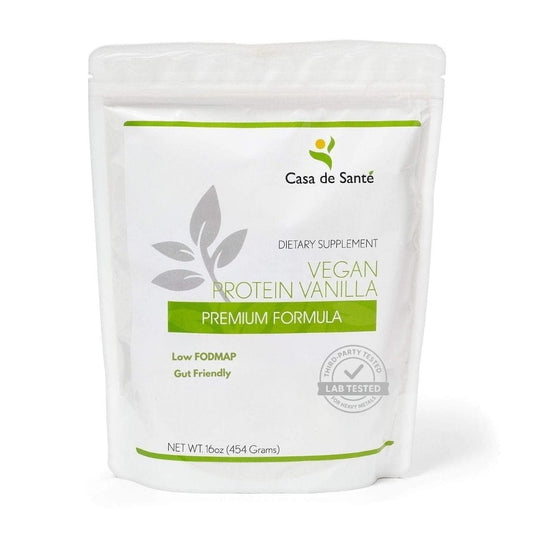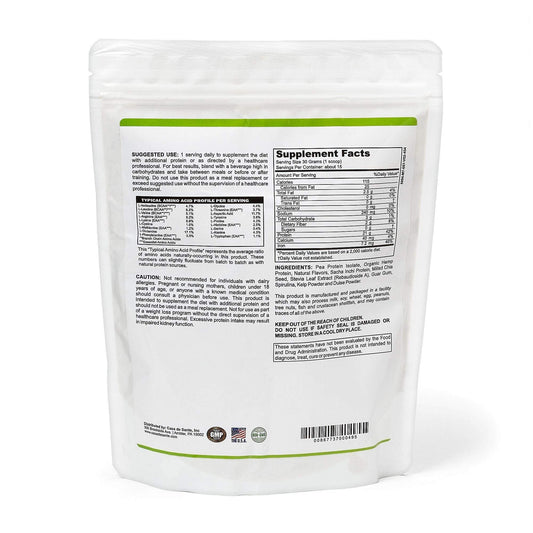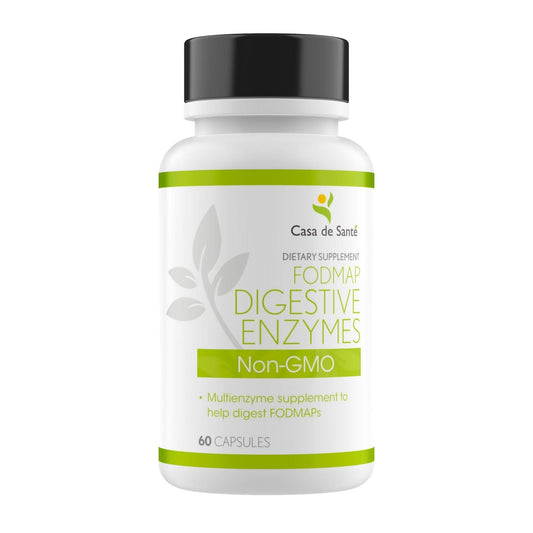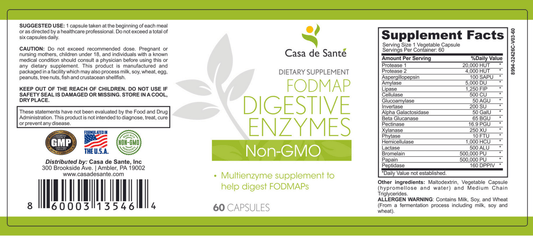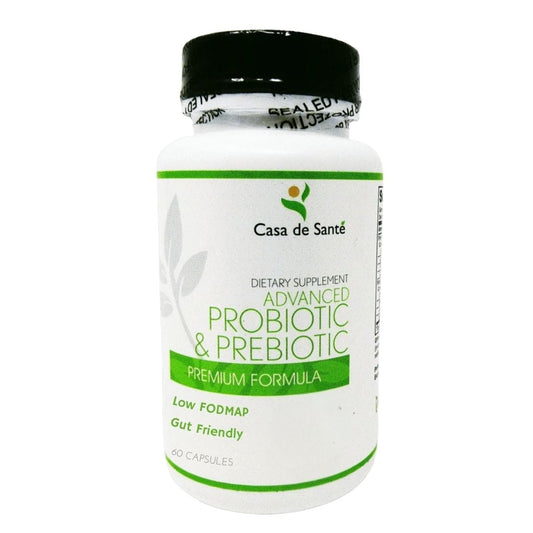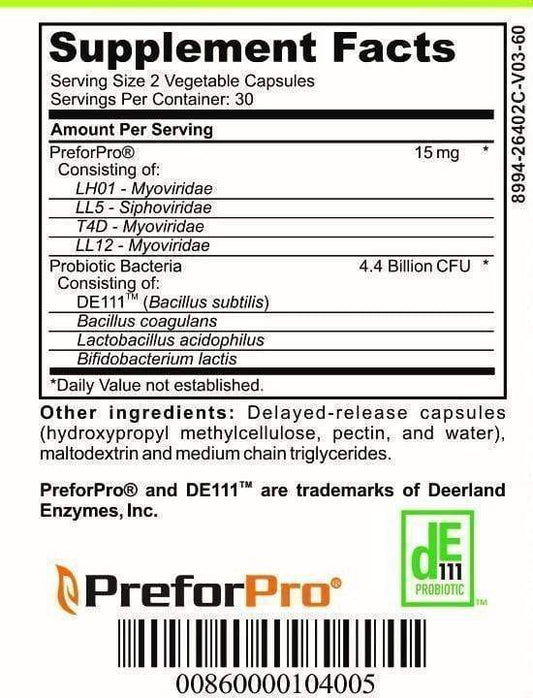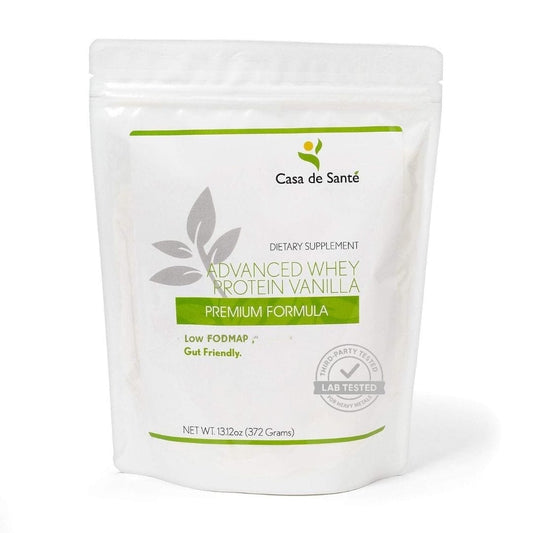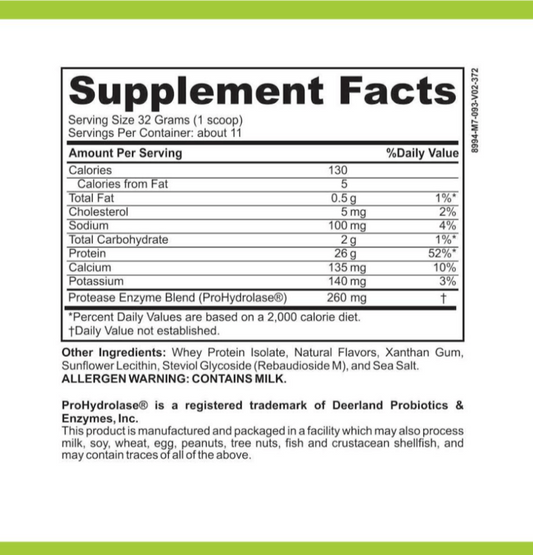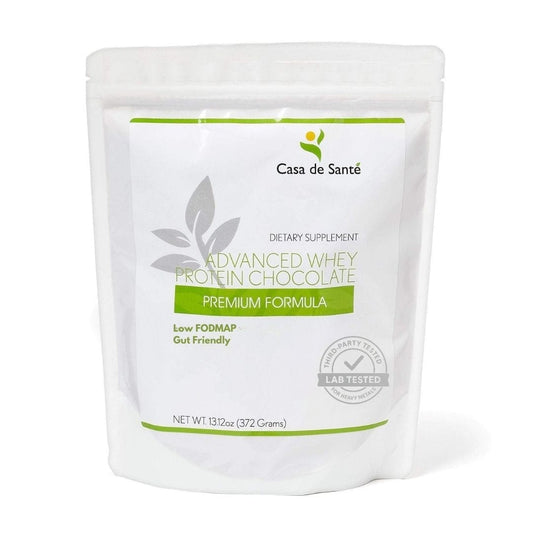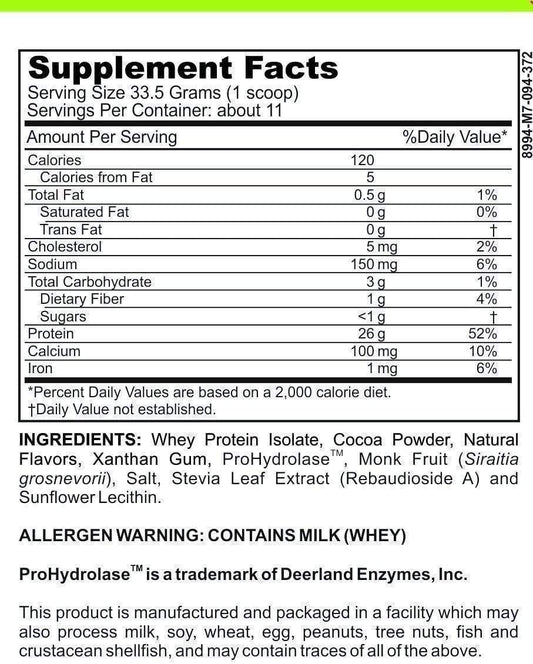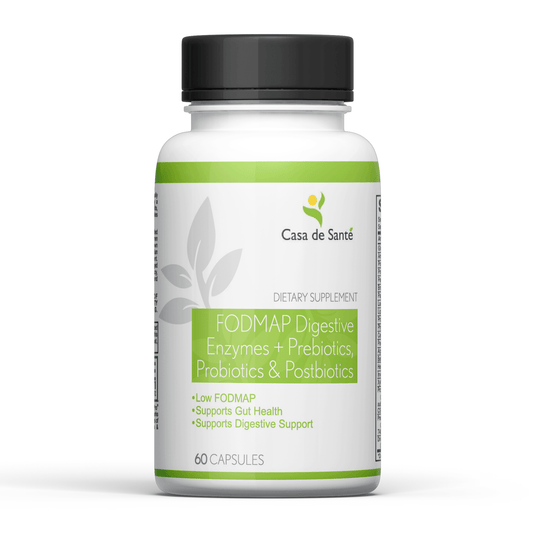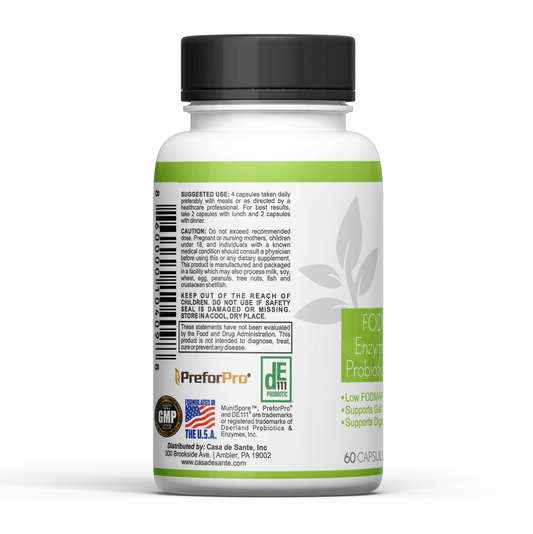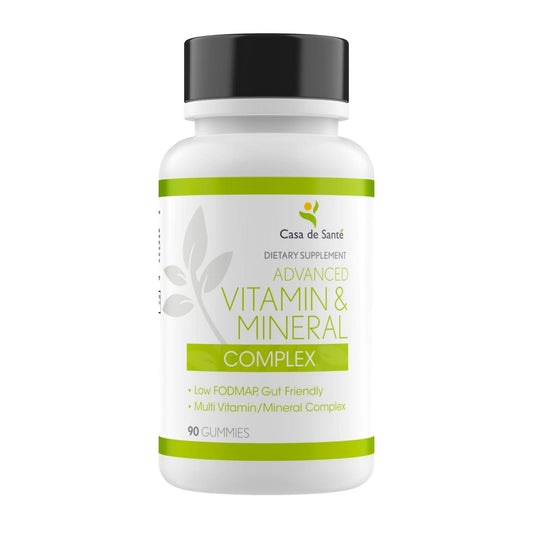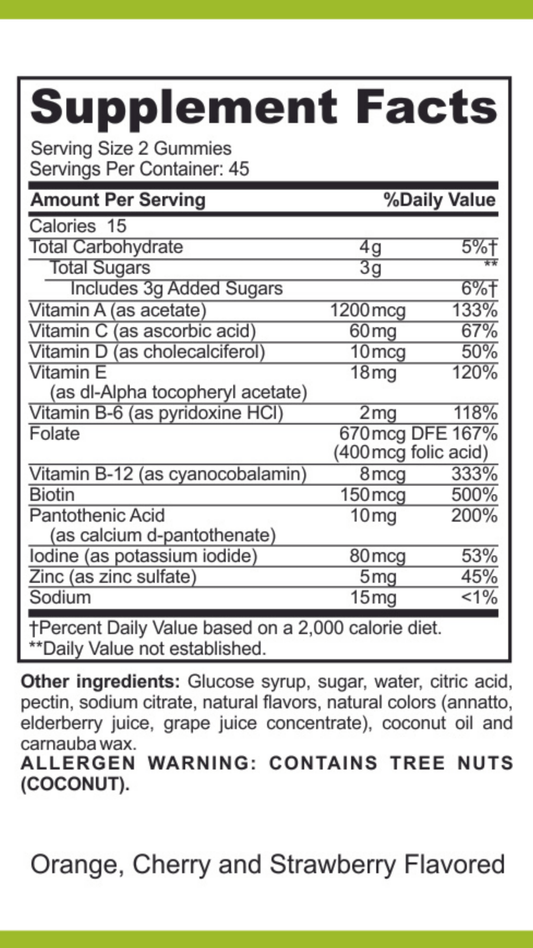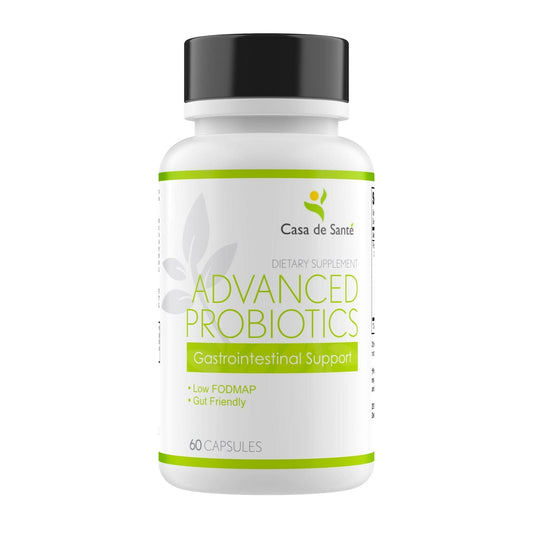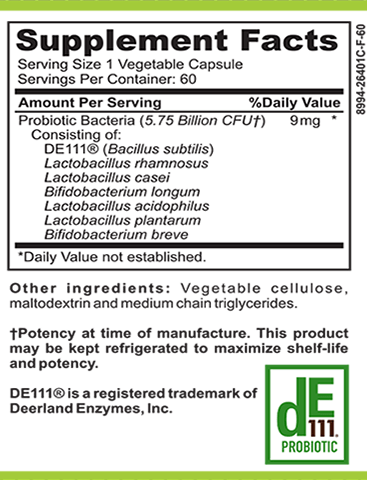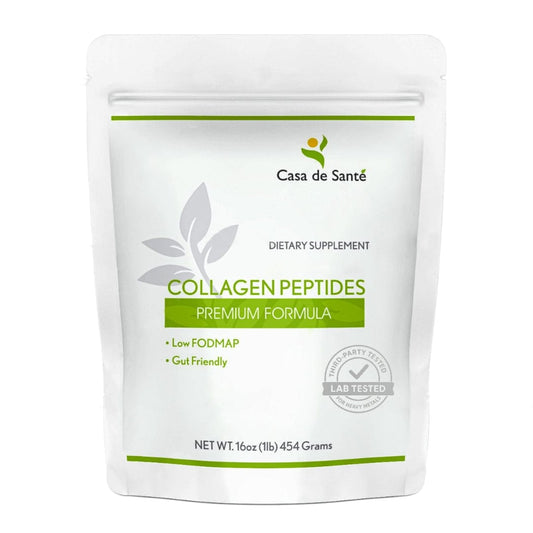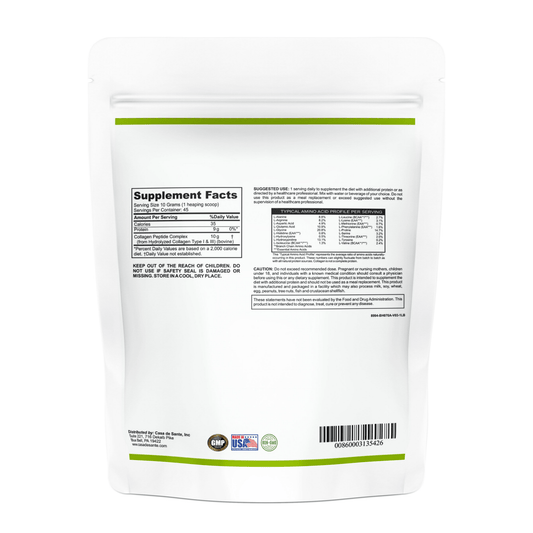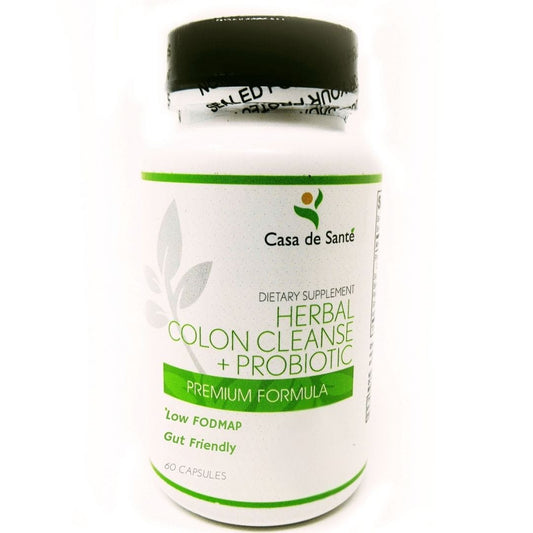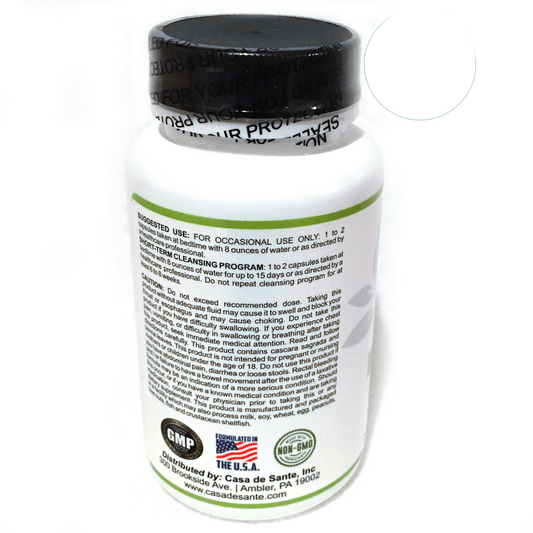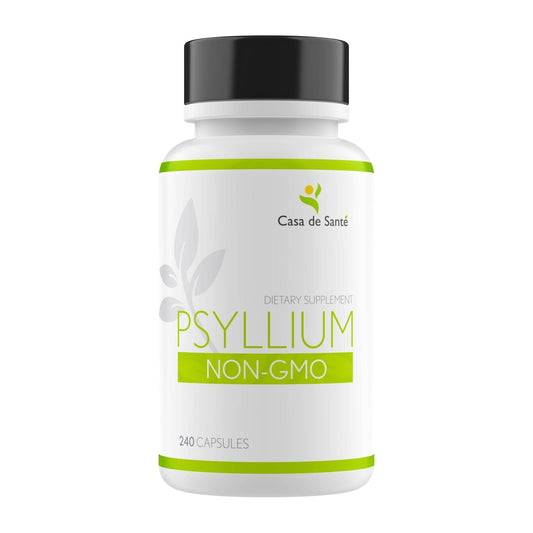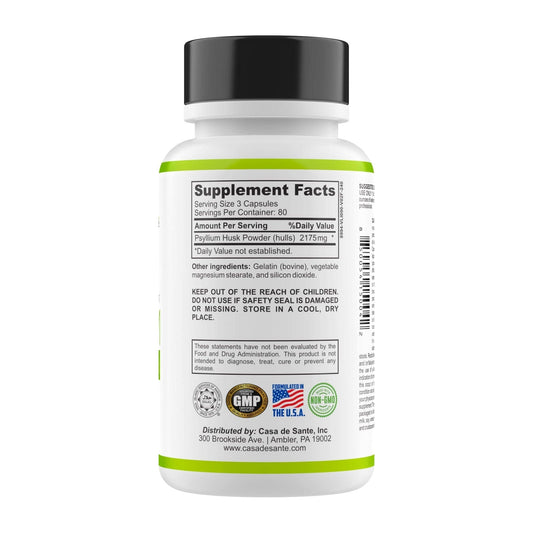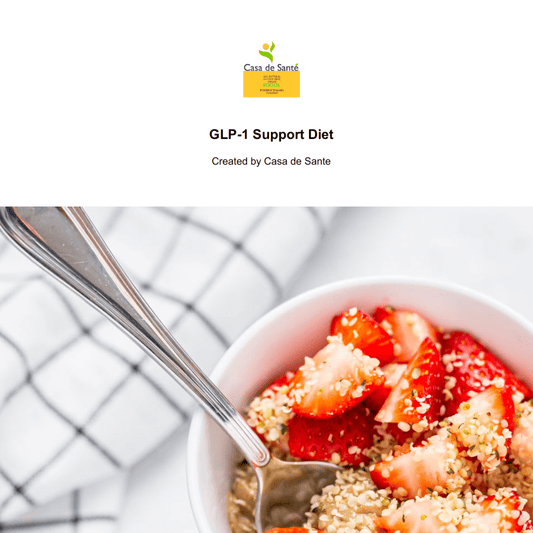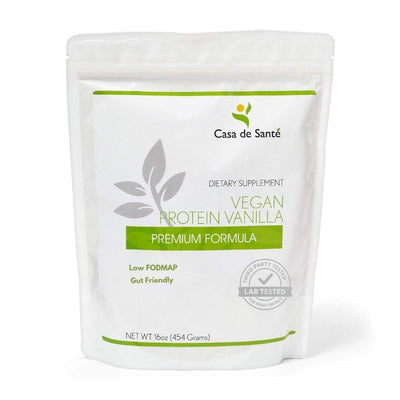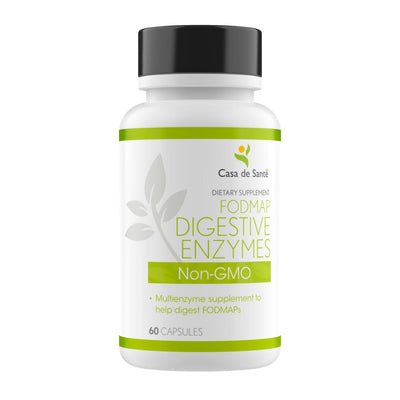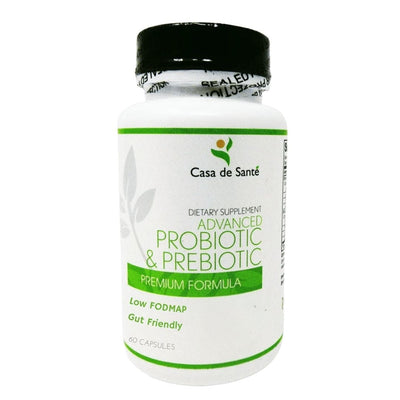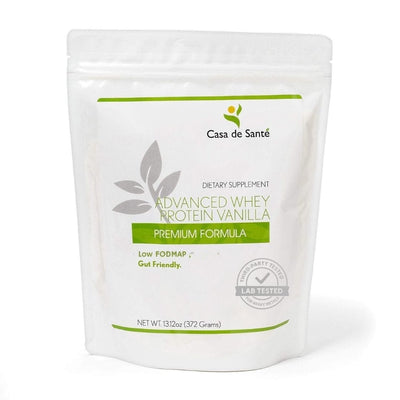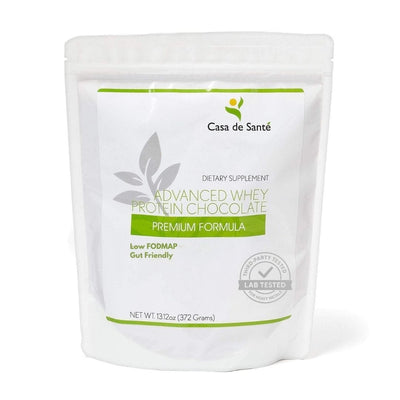Maximizing Your FODMAP Diet: Top Protein Sources for Gut Health
Starting a low FODMAP diet can feel like a real puzzle, especially when you're trying to figure out what proteins won't upset your gut. But don't worry, there's a good variety of protein-rich foods that fit the bill. Whether you're into tofu or prefer a nice piece of fish, there's something for everyone. Let's dive into some top picks that can help keep your tummy happy and your meals tasty.
Key Takeaways
- Firm tofu is a versatile, low FODMAP protein option perfect for stir-fries and salads.
- Tempeh offers a nutty flavor and is packed with protein, great for both vegetarians and meat-lovers.
- Chicken and turkey are lean meats that fit well within a FODMAP-friendly diet.
- Canned tuna and salmon are convenient, high-protein choices that are easy on the gut.
- Eggs are a simple, nutritious protein source suitable for any meal of the day.
1. Firm Tofu
Firm tofu is a powerhouse when it comes to plant-based proteins, especially for those navigating a low FODMAP diet. It's a versatile ingredient that can be transformed into a variety of dishes, making it a staple in many kitchens. Whether you're a seasoned cook or just starting out, firm tofu can be a great addition to your meals.
Why Choose Firm Tofu?
- High Protein Content: Firm tofu packs a punch with its protein content, making it an excellent meat alternative.
- Low in FODMAPs: It's naturally low in FODMAPs, which means it's gentle on your gut.
- Rich in Nutrients: Besides protein, it offers calcium, iron, and other essential nutrients.
Tips for Cooking with Firm Tofu
- Press the Tofu: Before cooking, press your tofu to remove excess moisture. This helps in achieving a better texture.
- Marinate for Flavor: Tofu absorbs flavors well, so marinating it can enhance your dish significantly.
- Try Different Cooking Methods: Bake, fry, or grill tofu to see which method you prefer.
Firm tofu is not just a meat substitute; it's a delicious ingredient in its own right. Experiment with different spices and sauces to find your perfect combination.
Nutritional Information
Here's a quick look at the nutritional content of firm tofu per 100g:
| Nutrient | Amount |
|---|---|
| Calories | 144 |
| Protein | 15g |
| Fat | 8g |
| Carbohydrates | 3g |
| Calcium | 350mg |
Firm tofu is a fantastic choice for anyone looking to increase their protein intake while adhering to a low FODMAP diet. Its adaptability in recipes makes it a favorite among many, so why not give it a try in your next meal?
2. Tempeh
Discovering Tempeh
Tempeh is a fantastic protein source for those on a low FODMAP diet. Made from fermented soybeans, it offers a unique texture and a nutty flavor that can enhance a variety of dishes. Tempeh is not only rich in protein, but it also contains probiotics that are great for gut health.
Nutritional Benefits
- High in Protein: Tempeh provides a substantial amount of protein, making it a great meat alternative.
- Rich in Probiotics: The fermentation process introduces beneficial bacteria, which can aid in digestion.
- Low in FODMAPs: Unlike some other soy products, tempeh is generally safe for those on a low FODMAP diet.
Cooking Tips
- Marinate for Flavor: Tempeh absorbs marinades well, so consider soaking it in your favorite sauce before cooking.
- Try Different Preparations: You can grill, sauté, or bake tempeh, making it a versatile addition to meals.
- Pair with Vegetables: Combine tempeh with low FODMAP veggies like zucchini or bell peppers for a balanced meal.
Tempeh is not just a food; it's a culinary adventure. Its versatility allows you to experiment with flavors and textures, making every meal exciting.
Quick Recipe Idea
For a simple meal, try stir-frying tempeh with a splash of soy sauce and sesame oil. Add in some bok choy and carrots for a delicious, low FODMAP dish that's ready in minutes.
3. Chicken
Chicken is a staple protein source for many, and it fits perfectly into a low-FODMAP diet. It's versatile, easy to cook, and gentle on the gut. Whether you're grilling, roasting, or boiling, chicken can be a delicious part of any meal plan.
Why Chicken?
- Low in FODMAPs: Chicken is naturally low in FODMAPs, making it a safe choice for those managing digestive issues.
- High in Protein: Packed with protein, it helps in muscle building and repair.
- Versatile Cooking Options: From salads to stir-fries, chicken can be incorporated into numerous dishes.
Cooking Tips
- Avoid Pre-marinated Options: These can contain high-FODMAP ingredients like garlic and onion.
- Use Fresh Herbs: Enhance flavor with low-FODMAP herbs like rosemary or thyme.
- Check Labels: If buying processed chicken products, ensure they're free from high-FODMAP additives.
Chicken is not just a source of protein, but a canvas for culinary creativity. With the right spices and cooking methods, it can be transformed into a gourmet delight that suits any dietary needs.
Quick Recipe Idea
- Grilled Chicken Salad: Combine grilled chicken with mixed greens, cherry tomatoes, and a lemon olive oil dressing for a refreshing meal.
Chicken's adaptability and nutritional profile make it an excellent choice for anyone following a low-FODMAP diet. So next time you're meal planning, consider adding chicken to your list.
4. Turkey
Turkey is a fantastic protein source for those on a FODMAP diet. It's lean, versatile, and easy on the digestive system. If you're looking for a way to add variety to your meals without upsetting your stomach, turkey might just be your new best friend.
Why Turkey?
- Low in Fat: Turkey breast is particularly low in fat, making it a heart-healthy choice.
- Rich in Protein: It packs a punch in the protein department, helping you feel full and satisfied.
- Versatile in Cooking: Whether you roast it, grill it, or use it in a stir-fry, turkey adapts well to various cooking methods.
Cooking Tips
- Keep it Moist: Turkey can dry out quickly, so marinate it or cook it with some broth.
- Season Wisely: Use herbs like rosemary or thyme, which are FODMAP-friendly, to add flavor.
- Watch the Portions: Stick to recommended serving sizes to keep your FODMAP intake in check.
Turkey isn't just for Thanksgiving. It's a year-round staple that can be the star of your meal prep. With its mild flavor, it's like a blank canvas for your culinary creativity.
Nutritional Snapshot
| Nutrient | Amount per 100g |
|---|---|
| Calories | 135 |
| Protein | 30g |
| Fat | 1g |
| Carbs | 0g |
Incorporating turkey into your diet can be both delicious and beneficial for gut health. So next time you're at the grocery store, consider picking up some turkey for a low-FODMAP meal option.
5. Canned Tuna
Canned tuna is a fantastic protein choice for those on a FODMAP diet. It's not only convenient but also packed with nutrients that support overall health. Tuna is naturally low in FODMAPs, making it a safe option for those with sensitive digestive systems.
Why Choose Canned Tuna?
- High Protein Content: Tuna is rich in protein, essential for muscle maintenance and repair.
- Omega-3 Fatty Acids: These healthy fats are known to reduce inflammation and support heart health.
- Easy to Prepare: Whether you're making a salad or a sandwich, canned tuna is quick and versatile.
Tips for Selecting Canned Tuna
- Check the Ingredients: Ensure your tuna is packed in water or olive oil without added high-FODMAP ingredients like onion or garlic.
- Opt for BPA-Free Cans: This helps reduce exposure to harmful chemicals.
- Sustainably Sourced: Look for brands that practice sustainable fishing to support environmental health.
Canned tuna is a reliable and nutritious option for those managing their FODMAP intake. It's a simple way to get a healthy dose of protein without the fuss.
6. Salmon
Salmon is not just a tasty fish but also a powerhouse of nutrients that can support your gut health, especially when following a low-FODMAP diet. Rich in omega-3 fatty acids, salmon is known for its anti-inflammatory properties, which can be particularly beneficial for those with digestive sensitivities.
Why Choose Salmon?
- Omega-3 Fatty Acids: These are essential fats that your body can't make on its own. They play a crucial role in reducing inflammation and supporting heart health.
- High-Quality Protein: Salmon provides a complete protein source, which means it contains all the essential amino acids your body needs.
- Vitamin D: This vitamin is vital for bone health and immune function, and salmon is one of the best natural sources.
Cooking Tips
- Grilling: A simple way to prepare salmon is by grilling it with a bit of olive oil, salt, and pepper.
- Baking: You can also bake salmon with some lemon slices and herbs for added flavor.
- Poaching: Poaching in a light broth can keep the salmon moist and tender.
For a nutrition assessment, incorporating salmon into your diet can be a game-changer. It's not only low in FODMAPs but also high in essential nutrients that promote overall well-being.
Incorporating salmon into your meals can be an easy way to boost your protein intake while adhering to a low-FODMAP regimen. Whether you're enjoying it as a main dish or adding it to salads, this fish can be a delicious and nutritious part of your diet.
7. Eggs
Eggs are a fantastic protein source for anyone on a FODMAP diet. They're not just packed with protein, but they're also super versatile. You can have them scrambled, boiled, poached, or even baked into a frittata. Eggs are naturally low in FODMAPs, making them a safe choice for those with sensitive guts.
Nutritional Breakdown
| Nutrient | Amount per Egg (large) |
|---|---|
| Calories | 68 |
| Protein | 6 grams |
| Fat | 5 grams |
| Carbohydrates | 1 gram |
Cooking Ideas
- Scrambled Eggs: Quick and easy, these can be jazzed up with some spinach or tomatoes.
- Boiled Eggs: Perfect for a snack or added to salads.
- Omelets: Add your favorite low-FODMAP veggies for a filling meal.
If you're looking for a quick, nutritious meal, eggs can be your best friend. They cook quickly and can be paired with a variety of other low-FODMAP ingredients to keep your meals interesting.
Important Tips
- Always check the freshness of your eggs before using.
- Consider organic or free-range eggs for better taste and quality.
- Pair with low-FODMAP veggies like spinach or bell peppers for added nutrients.
8. Quinoa
Quinoa is a powerhouse when it comes to low FODMAP grains. It's not only gluten-free but also packed with protein, making it a great choice for those on a low FODMAP diet. What makes quinoa stand out is its complete protein profile, containing all nine essential amino acids. This is a big deal, especially for vegans and vegetarians looking to meet their protein needs.
Nutritional Highlights
- Protein: Quinoa provides about 8 grams of protein per cup, cooked. That's pretty impressive for a grain!
- Fiber: With around 5 grams of fiber per cup, it supports digestion and keeps you feeling full longer.
- Minerals: It's a good source of magnesium, phosphorus, and iron.
Cooking Tips
- Rinse quinoa thoroughly before cooking to remove its natural coating, called saponin, which can taste bitter.
- Use a 2:1 water-to-quinoa ratio for cooking. Bring to a boil, then simmer for about 15 minutes until the water is absorbed.
- Fluff with a fork after cooking for a light and airy texture.
Quinoa is versatile and can be used in a variety of dishes. Whether in salads, as a side dish, or even in breakfast bowls, its nutty flavor and fluffy texture make it a favorite among those on a low FODMAP diet.
Recipe Idea
Try making a quinoa salad with cucumber, cherry tomatoes, and a squeeze of lemon. It's refreshing and perfect for a light lunch.
9. Chia Seeds
Chia seeds are tiny powerhouses packed with nutrients, making them a fantastic addition to a low FODMAP diet. These little seeds are not only rich in protein but also provide a good dose of fiber and omega-3 fatty acids. They're a versatile ingredient that can be used in various dishes, from smoothies to puddings.
Why Include Chia Seeds?
- Nutrient Dense: Chia seeds are loaded with calcium, magnesium, and phosphorus, supporting bone health.
- Omega-3 Source: They offer a plant-based source of omega-3 fatty acids, which can benefit heart health.
- High in Fiber: The fiber content helps maintain a healthy digestive system.
How to Use Chia Seeds
- Chia Pudding: Mix chia seeds with a milk of your choice and let them soak overnight for a creamy pudding.
- Smoothie Booster: Add a tablespoon of chia seeds to your morning smoothie for an extra nutrient kick.
- Baking: Incorporate chia seeds into baked goods for added texture and nutrition.
Adding chia seeds to your diet can be a simple yet effective way to boost your nutrient intake while keeping your gut happy. They blend well with various foods, making them an easy choice for anyone looking to enhance their meals with minimal effort.
10. Pumpkin Seeds
Nutritional Powerhouse
Pumpkin seeds, also known as pepitas, are a small but mighty source of nutrition. These seeds pack a punch with protein, healthy fats, and essential minerals like magnesium and zinc. They're a fantastic low FODMAP option for those looking to boost their protein intake without upsetting their gut.
Health Benefits
- Rich in Antioxidants: Pumpkin seeds are loaded with antioxidants that help reduce inflammation and protect your cells from damage.
- Heart Health: The healthy fats in pumpkin seeds can help lower cholesterol levels, supporting heart health.
- Blood Sugar Control: These seeds may help regulate blood sugar levels, making them a good snack choice for those with diabetes.
How to Enjoy
- As a Snack: You can enjoy them raw or roasted as a crunchy snack.
- In Salads: Sprinkle them over salads for an added crunch and nutritional boost.
- In Baking: Add them to bread or muffins for a nutty flavor and extra texture.
Pumpkin seeds are a versatile addition to your diet, offering not just flavor but also a wealth of nutrients that support overall health. Whether you're munching on them as a snack or tossing them into your favorite dishes, these seeds are a small change that can make a big difference in your wellness journey.
11. Almonds
Almonds are a fantastic addition to a low FODMAP diet, offering a crunchy texture and rich flavor. Packed with protein and healthy fats, they make for a satisfying snack or a versatile ingredient in various dishes. Here's why almonds should be on your radar:
- Nutrient Powerhouse: Almonds are loaded with essential nutrients like vitamin E, magnesium, and fiber. These nutrients support heart health and can help keep your digestive system happy.
- Protein Content: With about 6 grams of protein per ounce, almonds provide a plant-based protein boost that's perfect for those following a FODMAP-friendly diet.
- Serving Size Matters: Stick to a serving of about 10 almonds to stay within low FODMAP limits. Overindulging can lead to digestive discomfort, so moderation is key.
Almonds are not just a snack; they're a versatile ingredient that can enhance the flavor and nutrition of your meals. Whether sprinkled over a salad or blended into a smoothie, they bring a delightful crunch and nutritional punch.
Ways to Enjoy Almonds
- Almond Butter: Spread it on rice cakes or use it as a dip for carrot sticks.
- Almond Milk: A great alternative to dairy, perfect for your morning coffee or cereal.
- Almond Flour: Use it in baking for a gluten-free, low FODMAP option.
Incorporating almonds into your diet is a simple way to enjoy their numerous health benefits while keeping your FODMAP intake in check.
12. Peanut Butter
Peanut butter isn't just for sandwiches; it's a fantastic protein source for those on a FODMAP diet. Rich in protein and healthy fats, it's both nutritious and delicious. A typical serving is about two tablespoons, packing in around 8 grams of protein. But be careful, not all peanut butters are created equal.
Choosing the Right Peanut Butter
- Check the Ingredients: Look for peanut butter that lists only peanuts and maybe a little salt. Avoid those with added sugars or hydrogenated oils.
- Mind the Portion: Stick to the recommended serving size to keep it low FODMAP.
- Stir Before Use: Natural peanut butter separates, so give it a good stir before spreading.
Peanut butter can be a comforting and satisfying choice for a quick snack or meal addition, offering both flavor and nutritional benefits.
Quick Snack Ideas
- Apple Slices with Peanut Butter: A classic combo that's tasty and filling.
- Peanut Butter on Rice Cakes: Simple and crunchy, perfect for a light snack.
- Smoothies: Add a spoonful to your morning smoothie for an extra protein boost.
Peanut butter is versatile and can easily fit into your diet, whether you're adding it to breakfast, lunch, or a snack. Just remember to choose wisely and enjoy in moderation.
13. Rice Protein Powder
Rice protein powder is a fantastic option for those following a low FODMAP diet. It's derived from brown rice and is naturally gluten-free, making it a suitable choice for individuals with gluten sensitivities. This plant-based protein is gentle on the digestive system, offering a smooth alternative to whey or soy proteins, which can sometimes cause bloating or discomfort.
Benefits of Rice Protein Powder
- Digestive Friendliness: Rice protein is hypoallergenic and easy to digest, which is great for those with sensitive stomachs.
- Amino Acid Profile: While not as complete as animal proteins, rice protein still provides essential amino acids that support muscle growth and repair.
- Versatility: It can be easily mixed into smoothies, shakes, or even baked goods, making it a versatile addition to your diet.
How to Use Rice Protein Powder
- Smoothies and Shakes: Blend it with your favorite fruits and a bit of almond milk for a quick, nutritious boost.
- Baking: Substitute part of the flour in recipes with rice protein powder to add a protein punch to your baked goods.
- Soups and Stews: Stir it into soups or stews for an added protein boost without altering the flavor significantly.
If you're new to rice protein powder, start with small amounts to see how your body reacts. It's always a good idea to introduce new foods gradually, especially when managing gut health.
14. Edamame
Edamame, those little green soybeans, are more than just a tasty snack at your favorite sushi spot. They're a powerhouse of nutrition, especially for those on a low FODMAP diet. Packed with protein, fiber, and essential vitamins, edamame is a fantastic choice for anyone looking to boost their protein intake without upsetting their gut.
Why Choose Edamame?
- High in Protein: With about 17 grams of protein per cup, edamame is a plant-based protein that can easily compete with meat.
- Rich in Nutrients: It's loaded with folate, vitamin K, and iron, which are crucial for maintaining overall health.
- Low FODMAP: A half-cup serving is considered low in FODMAPs, making it a safe option for those with sensitive stomachs.
How to Enjoy Edamame
- Steamed and Salted: The simplest way to enjoy edamame is to steam the pods and sprinkle them with a bit of sea salt.
- In Salads: Toss them into salads for a protein boost. They add a nice texture and a pop of color.
- As a Snack: Keep a bowl of cooked edamame in the fridge for a quick and healthy snack.
Including edamame in your diet can be a game-changer for those navigating the low FODMAP lifestyle. It's versatile, nutritious, and most importantly, gentle on the gut.
15. Lentils
When it comes to adding protein to your low FODMAP diet, lentils might not be the first thing that comes to mind. But did you know that canned lentils are actually a low FODMAP food? The key is in the preparation. Canned lentils have significantly lower FODMAP content compared to their dried counterparts. This is due to the fact that the FODMAPs leach into the water during the canning process, making them easier on the gut.
How to Enjoy Lentils on a Low FODMAP Diet
- Choose Canned Over Dried: The canning process reduces the FODMAP content, so go for canned lentils. Just make sure to rinse them well before using.
- Watch Your Portion Size: Even though canned lentils are lower in FODMAPs, it's still important to keep your portions in check. Aim for about 1/2 cup per serving.
- Incorporate Them Into Meals: Lentils are versatile. Add them to salads, soups, or even stews for a protein boost.
Lentils are not just a great source of protein; they also provide essential nutrients like iron and fiber, which are important for maintaining good health. Just remember to keep an eye on your portion sizes to stay within low FODMAP guidelines.
By making a few adjustments, you can enjoy lentils as part of a gut-friendly diet.
16. Shrimp
Shrimp is a fantastic protein option for those on a FODMAP diet. It's not only low in FODMAPs but also high in protein and essential nutrients. Shrimp is rich in iodine, which is important for thyroid function, and also offers a good dose of omega-3 fatty acids.
Benefits of Shrimp
- Low in FODMAPs: Shrimp is naturally low in FODMAPs, making it a great choice for those with digestive sensitivities.
- High in Protein: A great source of lean protein, shrimp helps in muscle building and repair.
- Rich in Nutrients: Contains iodine, selenium, and vitamin B12, all of which are important for overall health.
Cooking Tips
- Quick Cooking: Shrimp cooks fast, usually in 3-5 minutes, making it perfect for quick meals.
- Versatile: Can be grilled, sautéed, or added to soups and salads.
- Flavor Pairing: Pairs well with lemon, garlic-infused oil, and herbs like parsley and dill.
Shrimp is an easy-to-prepare seafood that fits perfectly into a low-FODMAP lifestyle. Its versatility and nutrient profile make it a staple for many looking to maintain gut health while enjoying delicious meals.
17. Crab
Crab is a fantastic protein source that fits well into a low FODMAP diet. It's not just delicious but also packed with essential nutrients that support overall health. Rich in omega-3 fatty acids, crab can help reduce inflammation and improve heart health. It's also a great source of selenium, which plays a vital role in thyroid function and helps protect cells from damage.
Why Include Crab in Your Diet?
- Low in FODMAPs: Crab is naturally low in FODMAPs, making it a safe choice for those with sensitive stomachs.
- Nutrient-Rich: Provides a good dose of vitamins and minerals, including B12, zinc, and copper.
- Versatile: Can be enjoyed in various dishes, from salads to soups.
Tips for Buying and Preparing Crab
- Freshness is Key: Always choose fresh crab if possible. Look for a sweet smell and firm texture.
- Avoid Imitation: Stick to real crab meat to ensure you're getting the nutritional benefits.
- Cooking Methods: Steaming or boiling are the best methods to preserve its nutrients.
Including crab in a low FODMAP diet not only adds variety but also ensures you're getting a nutrient-dense protein source. Its unique flavor can elevate any meal, making it both enjoyable and gut-friendly.
18. Beef
When you're on a low-FODMAP diet, beef is a fantastic protein choice. It's naturally low in FODMAPs, so you can enjoy it without worry. Whether you're grilling up a steak or making a hearty stew, beef offers versatility and flavor.
Benefits of Beef on a Low-FODMAP Diet
- Nutrient-Rich: Beef is packed with essential nutrients like iron and B vitamins, which are crucial for energy and overall health.
- Protein Powerhouse: It provides a high amount of protein, which is essential for muscle repair and growth.
- Versatile in Cooking: From ground beef for tacos to roasts for special occasions, beef can be used in a variety of dishes.
Tips for Choosing Beef
- Opt for Fresh Cuts: Always choose fresh, unprocessed cuts to avoid hidden high-FODMAP ingredients.
- Check Labels: If buying pre-packaged beef, check for additives like garlic or onion, which are high in FODMAPs.
- Consider Grass-Fed: Grass-fed beef is often leaner and contains more omega-3 fatty acids.
Beef is a staple in many diets and can easily fit into a low-FODMAP lifestyle. By choosing the right cuts and cooking methods, you can enjoy delicious meals without compromising your gut health.
19. Pork
Pork is a fantastic low-FODMAP protein option for those looking to maintain gut health without sacrificing flavor. Its versatility makes it a staple in many diets, especially for those adhering to specific dietary needs. Whether you're grilling, roasting, or pan-frying, pork can be adapted to a variety of dishes.
Pork is not only delicious but also provides essential nutrients like protein, B vitamins, and zinc, which are crucial for maintaining energy levels and supporting immune function.
Cooking Tips for Pork
- Choose the Right Cut: Opt for lean cuts like pork tenderloin or loin chops to keep your meals healthy and low in fat.
- Season Simply: Use herbs and spices like rosemary, thyme, and black pepper instead of high-FODMAP ingredients like garlic and onion.
- Cook Thoroughly: Ensure pork is cooked to an internal temperature of 145°F (63°C) for safety.
Benefits of Including Pork in Your Diet
- High in Protein: Helps in muscle maintenance and repair.
- Rich in Nutrients: Provides essential vitamins and minerals.
- Versatile Ingredient: Can be used in a wide range of recipes, from stir-fries to stews.
Pork is an excellent choice for those on a low-FODMAP diet, offering both taste and nutrition without the digestive discomfort.
20. Lamb
Lamb is a fantastic protein choice for those on a low FODMAP diet. It's not only delicious but also packed with essential nutrients. Here's why lamb should be on your menu:
- Rich in Protein: Lamb is an excellent source of high-quality protein, which is crucial for muscle repair and growth.
- Contains Healthy Fats: Lamb provides a good amount of omega-3 fatty acids, which are beneficial for heart health.
- Packed with Vitamins and Minerals: It is rich in vitamins like B12 and minerals such as zinc and iron, supporting overall health.
When selecting lamb, it's best to choose fresh cuts without any added marinades or seasonings that might contain high FODMAP ingredients like garlic or onion. Cooking lamb is straightforward, and it can be enjoyed in various forms—grilled, roasted, or stewed.
Lamb is not just a tasty addition to your diet; it's a powerhouse of nutrition, making it a smart choice for maintaining a balanced low FODMAP diet.
Experiment with different herbs and spices like rosemary or thyme to bring out its natural flavors without needing high FODMAP ingredients. Enjoy lamb as part of a balanced meal with low FODMAP veggies like carrots or zucchini.
21. Duck
Duck is a fantastic protein option for those on a low-FODMAP diet. It's not only flavorful but also versatile in the kitchen. Duck meat is rich in essential nutrients like iron and zinc, which are crucial for maintaining good health. Here’s why duck should be on your plate:
Benefits of Duck
- Rich in Protein: Duck is a great source of high-quality protein, which is essential for muscle growth and repair.
- Nutrient-Dense: Packed with vitamins and minerals, duck provides nutrients like B vitamins, which are important for energy metabolism.
- Flavorful and Versatile: Duck meat has a unique flavor that can elevate any dish, from salads to main courses.
Cooking Tips
- Choose the Right Cut: Opt for duck breast or leg for the best flavor and texture.
- Cook with Care: Duck is best cooked at a medium temperature to ensure it remains tender and juicy.
- Pair with Low-FODMAP Sides: Consider serving duck with sides like roasted carrots or steamed green beans.
Duck is not just a delicious choice, but also a nutritious one. Enjoy it as part of a balanced diet to make the most of its health benefits.
22. Firm Soybean Products
Firm soybean products are a fantastic protein source for those on a low FODMAP diet. These products include tofu, tempeh, and edamame, all of which can be enjoyed without upsetting your gut. Here's a closer look at why they're a great choice:
- Tofu: Firm tofu is a versatile ingredient that can be used in a variety of dishes. It's not only low in FODMAPs but also rich in protein and calcium, making it a healthy option for those looking to maintain a balanced diet.
- Tempeh: This fermented soybean product is packed with probiotics, which can aid digestion and support gut health. Tempeh has a firm texture and a nutty flavor, making it a delicious addition to stir-fries and salads.
- Edamame: These young soybeans are not only a great snack but also a good source of plant-based protein. Edamame is low in FODMAPs when consumed in small portions, so it's perfect for a quick, healthy bite.
Firm soybean products offer a nutritious and gut-friendly way to get your protein fix without the digestive discomfort. Whether you're adding tofu to a stir-fry, tossing tempeh in a salad, or snacking on edamame, these options are both tasty and tummy-friendly.
23. Nut Butters
Nut butters are a fantastic source of protein while being gentle on your gut, making them a staple for anyone following a FODMAP diet. They're not just creamy and delicious, but also packed with essential nutrients. Let's explore some of the best nut butters to include in your diet:
- Peanut Butter: A classic favorite, peanut butter is not only tasty but also a great protein source. It's low in FODMAPs, making it a safe choice for those with sensitive stomachs.
- Almond Butter: Known for its rich flavor, almond butter is another excellent option. It contains more fiber than peanut butter, providing a satisfying and healthy spread.
- Sunflower Seed Butter: If you're looking for something nut-free, sunflower seed butter is a fantastic alternative. It's packed with vitamin E and magnesium, supporting overall health.
Nut butters are not only versatile but also a convenient way to add protein to your meals. Whether spread on toast, added to smoothies, or used as a dip for fruits, they offer a delicious way to maintain a balanced diet.
Feel free to mix and match these nut butters to keep your meals exciting and nutritious. Remember, moderation is key, as they are calorie-dense, but their benefits to a FODMAP diet are undeniable.
24. Spirulina
Spirulina is a type of blue-green algae that's been around forever, but it's only recently become a superstar in the health world. Packed with protein, vitamins, and minerals, it's a powerhouse for those on a low FODMAP diet. Spirulina is particularly rich in protein, providing all essential amino acids, making it a complete protein source.
Benefits of Spirulina
- Rich in Nutrients: Spirulina is loaded with vitamins B1, B2, B3, copper, and iron.
- Antioxidant Properties: It contains powerful antioxidants that help protect your cells.
- Anti-Inflammatory Effects: Spirulina can reduce inflammation in the body.
How to Incorporate Spirulina
- Smoothies: Add a teaspoon of spirulina powder to your morning smoothie for an extra nutrient boost.
- Salads: Sprinkle some spirulina flakes over your salad for a crunchy texture.
- Soups: Stir spirulina into soups for added flavor and health benefits.
Spirulina might look a bit strange with its vibrant green color, but its health benefits are hard to ignore. It's an easy addition to your diet that can make a big difference in how you feel.
Spirulina Nutritional Content
| Nutrient | Amount per 7g (1 tablespoon) |
|---|---|
| Protein | 4g |
| Vitamin B1 | 11% of the RDI |
| Vitamin B2 | 15% of the RDI |
| Vitamin B3 | 4% of the RDI |
| Copper | 21% of the RDI |
| Iron | 11% of the RDI |
Spirulina is a versatile and nutritious addition to any diet, especially for those following a low FODMAP plan. Its ease of use and wide range of benefits make it a top choice for health enthusiasts.
25. and more
When you're on a FODMAP diet, finding the right protein sources can be a bit of a puzzle. But don't worry, there's more out there than you might think! Let's dive into some additional options that can keep your meals exciting and your gut happy.
Legumes and Pulses
While some legumes are high in FODMAPs, there are a few that can be enjoyed in moderation:
- Chickpeas: Opt for canned ones and rinse them well.
- Black beans: Again, canned and rinsed is the way to go.
- Mung beans: These are often well-tolerated and can be sprouted.
Dairy Alternatives
Dairy can be tricky, but there are some low-FODMAP options:
- Lactose-free milk: A good alternative for your morning coffee or cereal.
- Hard cheeses: Cheddar, Parmesan, and Swiss are generally safe.
- Greek yogurt: Choose lactose-free versions.
Nuts and Seeds
Great for snacking or adding crunch to dishes:
- Macadamia nuts: A safe and tasty option.
- Pecans: Enjoy in moderation.
- Sesame seeds: Perfect for topping salads.
Remember, everyone's tolerance levels are different, so it's important to listen to your body and adjust accordingly. Exploring these options can help you maintain a balanced and enjoyable diet without compromising your gut health.
If you're looking for more ways to improve your health, check out our website! We offer a variety of products and services designed to support your wellness journey. Don't miss out on our special offers and helpful resources!
Conclusion
Wrapping up, sticking to a low FODMAP diet doesn't mean you have to miss out on protein. There are plenty of options out there that can keep your gut happy and your meals tasty. From lean meats to plant-based choices like tofu and tempeh, you can mix it up and keep things interesting. Just remember to check labels and maybe try new things. Your gut will thank you for it. So, go ahead, explore these protein sources and see what works best for you. It's all about finding that balance and enjoying your meals without the worry.
Frequently Asked Questions
What is a FODMAP diet?
A FODMAP diet is a way of eating that limits certain types of carbohydrates that can cause digestive problems. It's often used by people with IBS to help manage symptoms like bloating and gas.
Can I eat chicken on a FODMAP diet?
Yes, chicken is considered low in FODMAPs, making it a safe protein choice for those on this diet.
Is tofu a good protein source on a FODMAP diet?
Absolutely! Firm tofu is low in FODMAPs and is a great plant-based protein option for those following this diet.
Are eggs allowed on a FODMAP diet?
Yes, eggs are low in FODMAPs and can be included in your meals as a protein source.
What types of fish are good for a FODMAP diet?
Fish like salmon and canned tuna are low in FODMAPs and provide a healthy source of protein.
How can I make sure I'm getting enough protein on a FODMAP diet?
You can include a variety of low-FODMAP protein sources like chicken, firm tofu, eggs, and certain fish to ensure you're meeting your protein needs.

